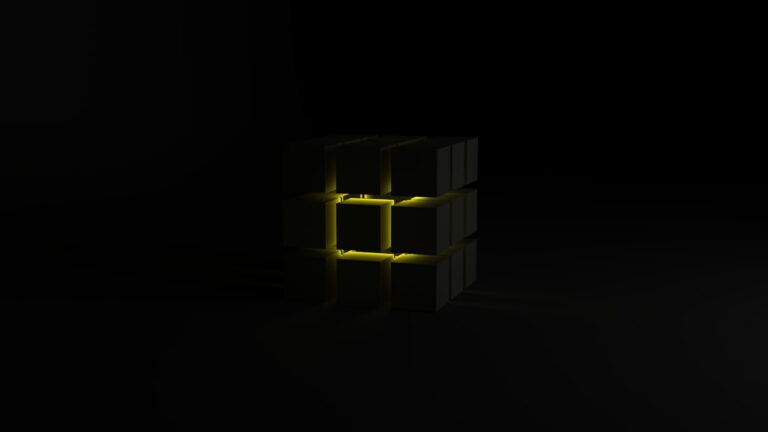Nostalgia is a powerful emotion that can transport individuals back to simpler times, evoking memories of childhood and the innocence that often accompanies it. For many, animated films serve as a portal to those cherished moments, where the worries of adulthood fade away, and the joy of discovery reigns supreme. The vibrant colors, whimsical stories, and memorable characters create a comforting cocoon that allows viewers to relive their past experiences.
This emotional connection is not merely a fleeting sensation; it is a profound bond that can influence one’s mood and perspective on life. The comfort derived from nostalgia is particularly evident when revisiting beloved animated classics. Films like “The Lion King,” “Beauty and the Beast,” and “Aladdin” are not just stories; they are vessels of memory that encapsulate the essence of childhood wonder.
The melodies of these films often linger long after the credits roll, triggering recollections of family movie nights or lazy afternoons spent in front of the television. This emotional resonance is further amplified by the universal themes of love, friendship, and adventure that permeate these narratives, making them relatable across generations. As adults, returning to these films can provide solace during challenging times, reminding us of the joy and simplicity that once defined our lives.
Key Takeaways
- Nostalgia and emotional comfort: Animation can evoke feelings of nostalgia and provide emotional comfort by reminding us of cherished memories from our past.
- Appreciating the art and animation: Animated films and series offer stunning visuals and intricate artwork that can be appreciated for their creativity and skill.
- Finding new meaning and themes: Through animation, viewers can discover new meanings and themes that resonate with their own experiences and perspectives.
- Escaping into a whimsical world: Animation allows audiences to escape into a whimsical world that offers a break from reality and a sense of wonder and imagination.
- Connecting with complex characters: Animated characters often have depth and complexity, allowing viewers to connect with their struggles and triumphs on a personal level.
- Discovering hidden details and easter eggs: Animation often includes hidden details and easter eggs that add an extra layer of enjoyment for attentive viewers.
Appreciating the Art and Animation
The artistry behind animated films is a testament to human creativity and innovation. From hand-drawn sketches to cutting-edge computer-generated imagery (CGI), the evolution of animation has transformed the way stories are told on screen. Each frame is meticulously crafted, with attention to detail that brings characters and worlds to life in ways that are both enchanting and visually stunning.
The artistry extends beyond mere aesthetics; it encompasses the entire process of storytelling, where visual elements work in harmony with narrative arcs to evoke emotions and convey messages. Consider the breathtaking landscapes of Studio Ghibli films, where every blade of grass and ripple in water is rendered with painstaking precision. Films like “Spirited Away” and “My Neighbor Totoro” showcase not only the technical prowess of animators but also their ability to create immersive environments that resonate with viewers on a deeper level.
The use of color, light, and shadow plays a crucial role in setting the mood and tone of each scene, enhancing the viewer’s emotional experience. Similarly, Pixar has redefined animation with its groundbreaking technology and storytelling techniques, producing films like “Up” and “Inside Out” that blend humor with poignant themes. The artistry in these films is not just about visual appeal; it is an integral part of the narrative that enriches the overall experience.
Finding New Meaning and Themes

As audiences grow older, their perspectives on familiar stories often shift, revealing new layers of meaning that may have gone unnoticed in childhood. Animated films are rich with themes that resonate differently at various stages of life. For instance, a child may view “Finding Nemo” primarily as an adventure about a father searching for his son, while an adult might appreciate the deeper themes of loss, resilience, and the complexities of parenthood.
This ability to reinterpret narratives allows animated films to remain relevant across generations, inviting viewers to engage with them in new ways. Moreover, contemporary animated films increasingly tackle complex social issues and moral dilemmas that reflect the realities of modern life. Movies like “Zootopia” address themes of prejudice and acceptance through a lens that is accessible to younger audiences while still prompting critical discussions among adults.
Similarly, “Coco” explores themes of family, memory, and cultural heritage, encouraging viewers to reflect on their own relationships and legacies.
Escaping into a Whimsical World
Animated films offer an unparalleled escape into fantastical realms where imagination knows no bounds. These whimsical worlds are often characterized by vibrant colors, quirky characters, and surreal landscapes that defy the laws of reality. This escapism is particularly appealing in times of stress or uncertainty, providing a refuge where viewers can momentarily forget their troubles and immerse themselves in enchanting narratives.
The sheer creativity displayed in these films invites audiences to explore possibilities beyond their everyday lives. Take “Alice in Wonderland,” for example; it transports viewers into a bizarre universe filled with eccentric characters and nonsensical logic. The film’s dreamlike quality allows audiences to embrace absurdity and wonder, encouraging them to let go of conventional thinking.
Similarly, Disney’s “Frozen” introduces viewers to the magical kingdom of Arendelle, where themes of love and self-acceptance unfold against a backdrop of stunning ice castles and talking snowmen. These fantastical settings not only captivate the imagination but also serve as metaphors for personal growth and transformation. In this way, animated films become more than just stories; they are gateways to new experiences that inspire creativity and wonder.
Connecting with Complex Characters
One of the hallmarks of great animated films is their ability to create complex characters that resonate with audiences on multiple levels. These characters often embody traits that reflect real human experiences—fear, courage, love, and loss—allowing viewers to see themselves within their journeys. For instance, characters like Woody from “Toy Story” or Elsa from “Frozen” grapple with issues of identity, belonging, and personal growth, making them relatable figures for audiences of all ages.
The depth of character development in animated films often surpasses that found in live-action cinema. This is partly due to the freedom animation provides in terms of visual expression; animators can exaggerate emotions through facial expressions and body language in ways that enhance storytelling. The character arcs in films like “Inside Out,” which personifies emotions as distinct characters navigating the complexities of growing up, illustrate how animation can delve into psychological themes with nuance and sensitivity.
By connecting with these multifaceted characters, viewers are encouraged to reflect on their own lives and experiences, fostering empathy and understanding.
Discovering Hidden Details and Easter Eggs

Animated films are often rich with hidden details and Easter eggs that reward attentive viewers with delightful surprises. These subtle nods can range from visual callbacks to previous works by the studio to clever references that enhance the narrative experience.
Moreover, these hidden details often serve as clever commentary or thematic reinforcement within the story itself. In “Zootopia,” for instance, various background elements reflect societal issues such as stereotypes and biases, enriching the film’s exploration of prejudice while providing layers for viewers to unpack upon repeated viewings. The meticulous attention to detail in animated films not only showcases the dedication of animators but also invites audiences to engage more deeply with the material.
This interactive aspect transforms viewing into an active experience where fans can share discoveries and interpretations, fostering a sense of community among those who appreciate the artistry behind these beloved films. In conclusion, animated films are much more than mere entertainment; they are intricate tapestries woven from nostalgia, artistry, complex characters, and hidden details that resonate across generations. They provide emotional comfort while inviting viewers into whimsical worlds filled with profound themes and meaningful connections.
As audiences continue to explore these cinematic treasures, they uncover new layers of understanding that enrich their lives long after the credits have rolled.
If you enjoy the comfort of rewatching Studio Ghibli films as an adult, you may also find Introduction to Culture in Indian Society to be an interesting read. This article delves into the rich cultural tapestry of India, exploring the various traditions, customs, and beliefs that shape Indian society. Just as Studio Ghibli films offer a glimpse into the beauty and complexity of Japanese culture, this article provides a fascinating look at the diverse cultural landscape of India.
FAQs
What are Studio Ghibli films?
Studio Ghibli is a Japanese animation film studio known for its high-quality animated films, often featuring themes of fantasy, adventure, and coming-of-age stories. The studio was founded in 1985 by directors Hayao Miyazaki and Isao Takahata.
Why do adults enjoy rewatching Studio Ghibli films?
Adults often enjoy rewatching Studio Ghibli films for their rich storytelling, beautiful animation, and timeless themes that resonate with people of all ages. The films often explore complex emotions and universal experiences, making them appealing to adult viewers.
What are some popular Studio Ghibli films that adults enjoy rewatching?
Some popular Studio Ghibli films that adults enjoy rewatching include “Spirited Away,” “My Neighbor Totoro,” “Princess Mononoke,” “Howl’s Moving Castle,” “Kiki’s Delivery Service,” and “Castle in the Sky,” among others.
How do Studio Ghibli films provide comfort to adults?
Studio Ghibli films provide comfort to adults through their nostalgic and familiar storytelling, as well as their ability to evoke a sense of wonder and imagination. The films often address themes of resilience, empathy, and the beauty of the natural world, offering a sense of solace and reassurance to adult viewers.
Do Studio Ghibli films have deeper meanings that adults can appreciate?
Yes, Studio Ghibli films often contain deeper meanings and themes that adults can appreciate, such as environmentalism, the complexities of human relationships, and the journey of self-discovery. The films are known for their nuanced storytelling and thought-provoking messages that resonate with adult audiences.























+ There are no comments
Add yours